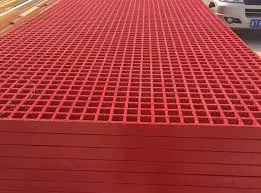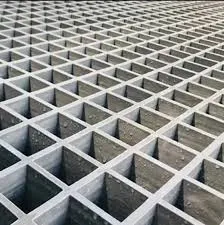
-
 Afrikaans
Afrikaans -
 Albanian
Albanian -
 Amharic
Amharic -
 Arabic
Arabic -
 Armenian
Armenian -
 Azerbaijani
Azerbaijani -
 Basque
Basque -
 Belarusian
Belarusian -
 Bengali
Bengali -
 Bosnian
Bosnian -
 Bulgarian
Bulgarian -
 Catalan
Catalan -
 Cebuano
Cebuano -
 China
China -
 China (Taiwan)
China (Taiwan) -
 Corsican
Corsican -
 Croatian
Croatian -
 Czech
Czech -
 Danish
Danish -
 Dutch
Dutch -
 English
English -
 Esperanto
Esperanto -
 Estonian
Estonian -
 Finnish
Finnish -
 French
French -
 Frisian
Frisian -
 Galician
Galician -
 Georgian
Georgian -
 German
German -
 Greek
Greek -
 Gujarati
Gujarati -
 Haitian Creole
Haitian Creole -
 hausa
hausa -
 hawaiian
hawaiian -
 Hebrew
Hebrew -
 Hindi
Hindi -
 Miao
Miao -
 Hungarian
Hungarian -
 Icelandic
Icelandic -
 igbo
igbo -
 Indonesian
Indonesian -
 irish
irish -
 Italian
Italian -
 Japanese
Japanese -
 Javanese
Javanese -
 Kannada
Kannada -
 kazakh
kazakh -
 Khmer
Khmer -
 Rwandese
Rwandese -
 Korean
Korean -
 Kurdish
Kurdish -
 Kyrgyz
Kyrgyz -
 Lao
Lao -
 Latin
Latin -
 Latvian
Latvian -
 Lithuanian
Lithuanian -
 Luxembourgish
Luxembourgish -
 Macedonian
Macedonian -
 Malgashi
Malgashi -
 Malay
Malay -
 Malayalam
Malayalam -
 Maltese
Maltese -
 Maori
Maori -
 Marathi
Marathi -
 Mongolian
Mongolian -
 Myanmar
Myanmar -
 Nepali
Nepali -
 Norwegian
Norwegian -
 Norwegian
Norwegian -
 Occitan
Occitan -
 Pashto
Pashto -
 Persian
Persian -
 Polish
Polish -
 Portuguese
Portuguese -
 Punjabi
Punjabi -
 Romanian
Romanian -
 Russian
Russian -
 Samoan
Samoan -
 Scottish Gaelic
Scottish Gaelic -
 Serbian
Serbian -
 Sesotho
Sesotho -
 Shona
Shona -
 Sindhi
Sindhi -
 Sinhala
Sinhala -
 Slovak
Slovak -
 Slovenian
Slovenian -
 Somali
Somali -
 Spanish
Spanish -
 Sundanese
Sundanese -
 Swahili
Swahili -
 Swedish
Swedish -
 Tagalog
Tagalog -
 Tajik
Tajik -
 Tamil
Tamil -
 Tatar
Tatar -
 Telugu
Telugu -
 Thai
Thai -
 Turkish
Turkish -
 Turkmen
Turkmen -
 Ukrainian
Ukrainian -
 Urdu
Urdu -
 Uighur
Uighur -
 Uzbek
Uzbek -
 Vietnamese
Vietnamese -
 Welsh
Welsh -
 Bantu
Bantu -
 Yiddish
Yiddish -
 Yoruba
Yoruba -
 Zulu
Zulu
Feb . 15, 2025 05:51
Back to list
Ship Pipings and Fittings
Exploring the Future of Vibration Control with GRP Dampers
Automotive engineers also place considerable trust in GRP dampers, especially in the design of electric vehicles (EVs). The silent operation of EVs makes them more susceptible to discernible vibrations, which can impact both performance and passenger comfort. GRP dampers provide a solution by minimizing these unwanted vibrations, ensuring a smoother and quieter ride. From a scientific perspective, the research into GRP as a damping material underscores its effectiveness. Studies have highlighted its ability to maintain performance over extended periods, even under substantial stress and strain. This reliability is crucial for sectors like construction, where environmental conditions can be unpredictable. The thermal properties of GRP also contribute to its popularity. Unlike some metals, which can expand and contract significantly with temperature variations, GRP maintains its shape and effectiveness. This thermal stability ensures consistent performance, an essential quality for structures exposed to fluctuating temperatures. The adoption of GRP dampers is also a testament to the industry's shift towards more sustainable and eco-friendly solutions. Traditional dampers often necessitate the use of resources that are scarce or environmentally taxing to extract and produce. In contrast, GRP, made from readily available materials, represents a more sustainable choice. Its durability and long lifecycle further reduce the environmental impact, aligning with modern green engineering practices. In essence, the development and implementation of GRP dampers signify a pivotal point in vibration control technology. These dampers not only provide superior performance and durability but also represent an advancement toward more sustainable industrial practices. As industries continue to evolve and the demands for high-performance, lightweight, and reliable solutions grow, GRP dampers are poised to play an increasingly vital role. For decision-makers, engineers, and architects considering the next generation of vibration control solutions, the experience and research surrounding GRP dampers provide a compelling case. Their proven expertise and reliability render them an authoritative choice, ensuring that structures and machines can meet today's rigorous standards of safety and efficiency. In this rapidly progressing field, GRP dampers are not just an innovation but a necessity, demonstrating a trustworthy advancement in combating the complexities of vibration-related challenges.


Automotive engineers also place considerable trust in GRP dampers, especially in the design of electric vehicles (EVs). The silent operation of EVs makes them more susceptible to discernible vibrations, which can impact both performance and passenger comfort. GRP dampers provide a solution by minimizing these unwanted vibrations, ensuring a smoother and quieter ride. From a scientific perspective, the research into GRP as a damping material underscores its effectiveness. Studies have highlighted its ability to maintain performance over extended periods, even under substantial stress and strain. This reliability is crucial for sectors like construction, where environmental conditions can be unpredictable. The thermal properties of GRP also contribute to its popularity. Unlike some metals, which can expand and contract significantly with temperature variations, GRP maintains its shape and effectiveness. This thermal stability ensures consistent performance, an essential quality for structures exposed to fluctuating temperatures. The adoption of GRP dampers is also a testament to the industry's shift towards more sustainable and eco-friendly solutions. Traditional dampers often necessitate the use of resources that are scarce or environmentally taxing to extract and produce. In contrast, GRP, made from readily available materials, represents a more sustainable choice. Its durability and long lifecycle further reduce the environmental impact, aligning with modern green engineering practices. In essence, the development and implementation of GRP dampers signify a pivotal point in vibration control technology. These dampers not only provide superior performance and durability but also represent an advancement toward more sustainable industrial practices. As industries continue to evolve and the demands for high-performance, lightweight, and reliable solutions grow, GRP dampers are poised to play an increasingly vital role. For decision-makers, engineers, and architects considering the next generation of vibration control solutions, the experience and research surrounding GRP dampers provide a compelling case. Their proven expertise and reliability render them an authoritative choice, ensuring that structures and machines can meet today's rigorous standards of safety and efficiency. In this rapidly progressing field, GRP dampers are not just an innovation but a necessity, demonstrating a trustworthy advancement in combating the complexities of vibration-related challenges.
Next:
Related Products









